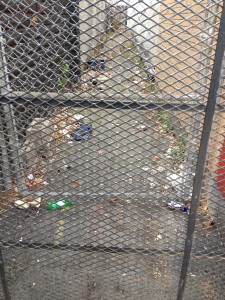Foreign workers hoping to find jobs in Canada are waiting twice as long for their permits to be approved compared to four years ago.
According to an analysis of data collected from Citizenship and Immigration Canada there has been a steady increase since 2010 in the amount of time it takes for the majority of temporary workers permits to be assessed.
Below shows the number of days it took in 2014 for permit approval in different cities across the world.
For example four years ago people applying from countries in Asia and the Pacific generally waited 70 days for their applications to be approved while in the last year wait times have risen to 196 days.
Cities that saw the greatest increase over the past four years in wait times:
There are a many factors that could be causing these wait times said Chris Solio of Migrant Workers Alliance for Change.
He speculated that a reduction in the number of people working for Canadian Immigration Canada has created a backlog. “The people who would be processing those work permits (is fewer) compared to the number of work permits.”
However differing permit requirements for different countries plays a large part in the delays. Immigrants from certain countries face higher restrictions and requirements than others. “The country of origin is a big part of it in how fast or how slow your work permit will be generated,” said Solio, (If applications aren’t) properly done then that would add into the delay or speeding up of your work permit.
Some of those differences depend on whether or not the country a worker comes from requires a visa to enter Canada.
Amy Casipullai, Senior Policy and Communications Director for Ontario Council of Agencies Serving Immigrants (OCASI) said problems arise with the way the Canadian government ‘divides the world’.
“Some of the workers who come in are from countries where they don’t need a visa to come to Canada, generally countries in the global south have a visa restriction and countries in the global north don’t,” she said.
Two cities facing some of the highest permit wait times in the past year were Chandigarh, India and Manila, Philippines. Both countries require potential workers to apply for a visa plus a temporary work permit.
“Living caregivers who come from the Philippines will be waiting longer for their work permit as opposed to somebody in Hong Kong or in the Middle East,” said Solio.
Caregivers are one of the longest running temporary worker programs in Canada, it is known as the Live-in Caregiver Program (LCP). People from outside Canada come to work as nannies and caretakers for the elderly.
Casipullai said she has also heard complaints from LCP employers about long delays for permit approval.
According to Solio people living in the Philippines will sometimes even move to countries or cities where they know application approval will be quicker. He says there are major problems in this profession when Canadians who require care are not receiving it due to long delays for permit approval.
However not every profession is effected equally. Temporary workers are typically divided into two categories, high skilled workers and low skilled workers, though Canada also has large caregiver and agricultural worker programs.
High skilled workers who are recruited by Canadian companies can often get around the long wait times by hiring immigration lawyers or by using intra-company transfers argued Solio.
Agricultural workers are also tend to receive a quicker turn around for approval said Casipullai. “Those workers come in year in and year out,” she said, “and I haven’t heard of any delays in that area.”
Mexico is one of the countries where seasonal agricultural workers tend to come from. Its wait time for example is as short as 14 days in Mexico City. This has been fairly consistent over the past four years with the longest wait reaching only 18 days in 2011.
Things are not so easy for low skilled workers, who make up the majority of applicants said Casipullai. She said despite attempts by government to say most of the people using the temporary worker program are high skill that it seems like the majority are low skill.
These people travel to Canada because they know there are jobs here said David Onyalo of the Canadian Labour Congress. Even though they are considered low skilled many of them need to travel to Canada in order to find employment.
When asked to explain the differing processing times Citizen and Immigration Canada (CIC) responding by saying “work permit applications are considered on a case-by-case basis on the specific facts presented by the applicant in each case.”
They argued “the number of applications received, the complexity of the case, the response of applicants to requests for additional documentation or information, among other factors.”
In light of the complaints of abuse of the program in the last year CIC has attempted to create changes to improve the program. In an attempt to focus the program on high skilled workers they have imposed conditions on employers making it harder to hire foreign workers.
This has the potential to increase the negative impacts that are already being felt for low skill workers. Those not recruited by a company will likely have increased difficulty being approved for a permit, which is likely to result in even slower approval times in the future.
Here you can find the safety regulations for temporary workers.








